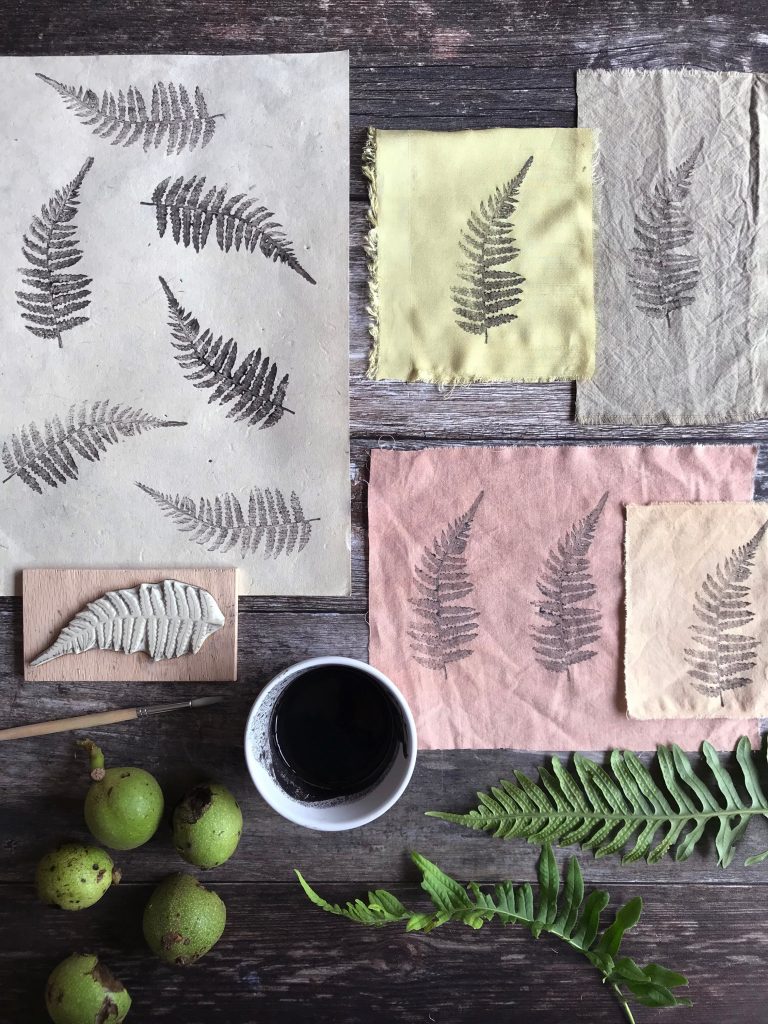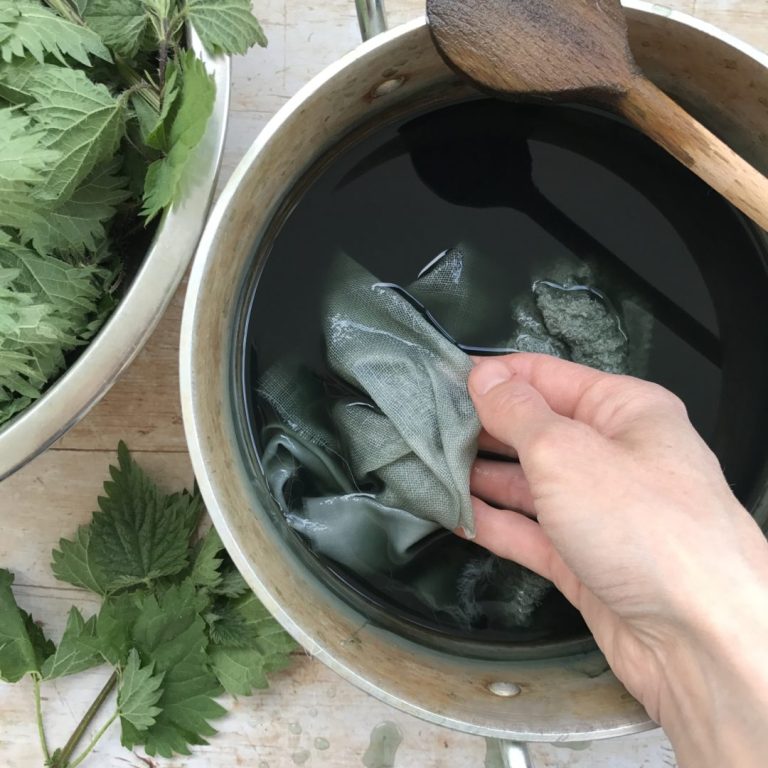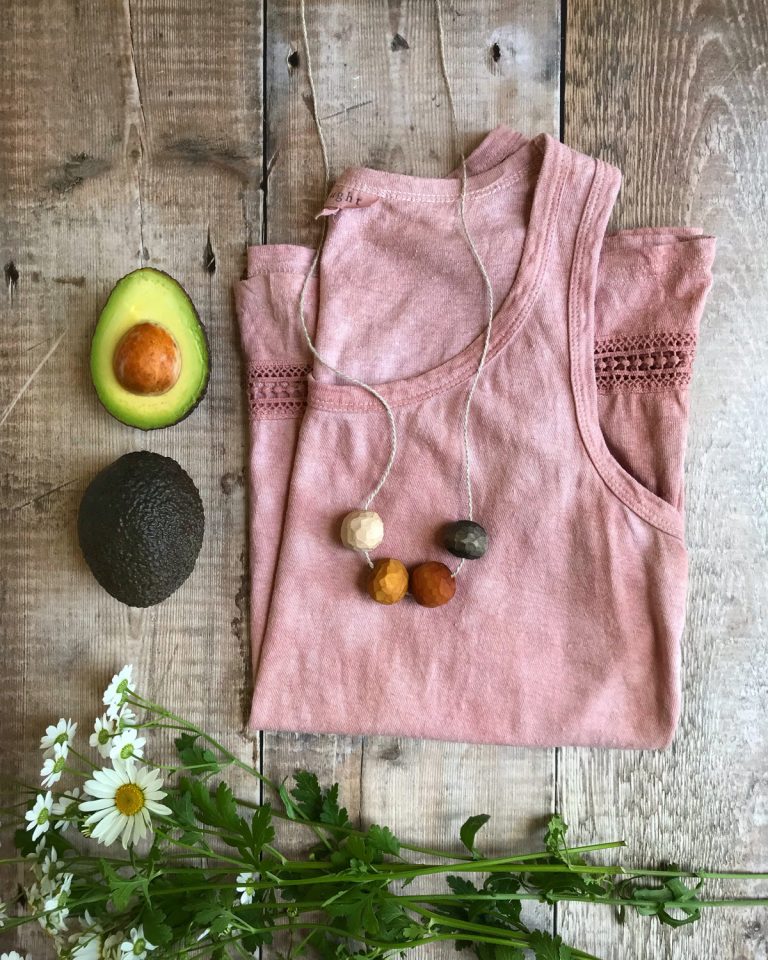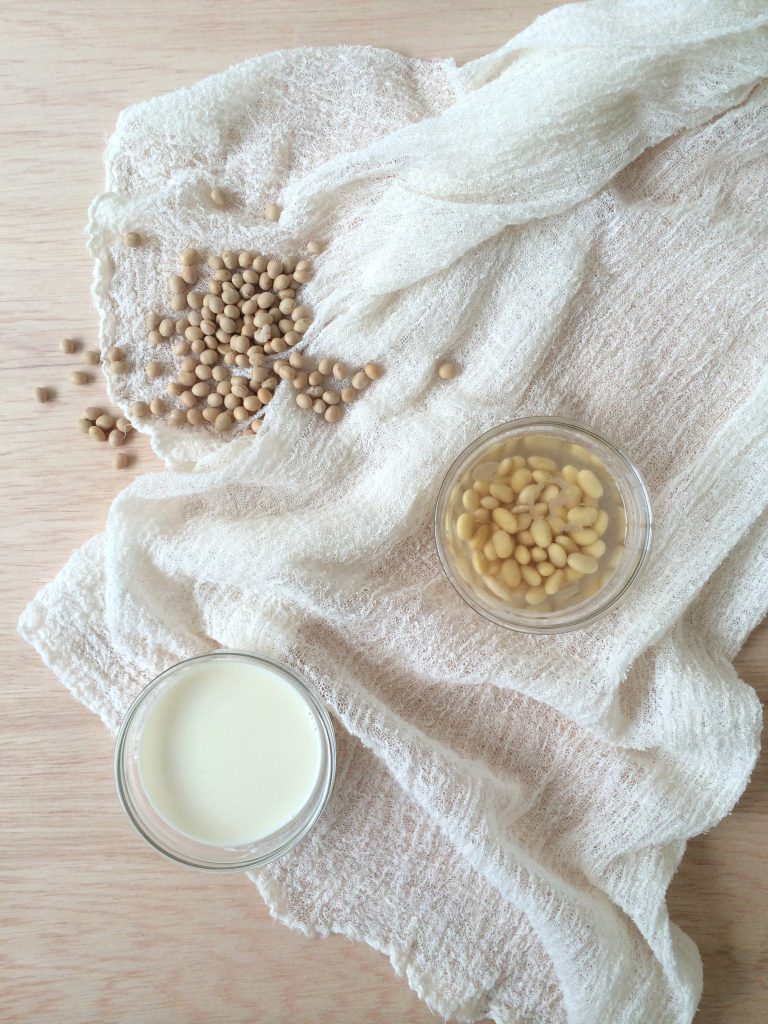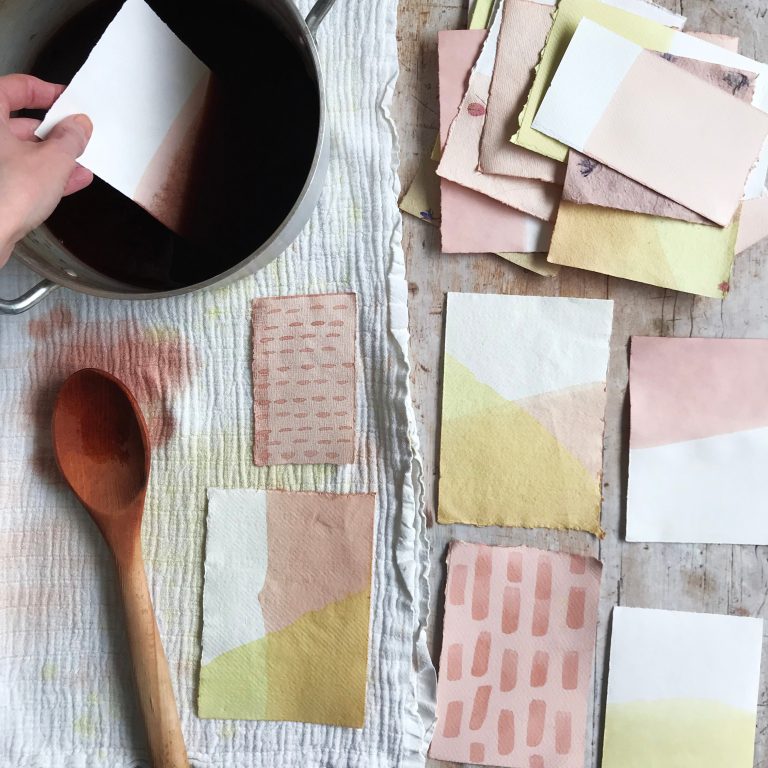In this blog post I’ll show you how to quickly and simply extract dye from coreopsis flowers using hot water. This makes a beautiful dye that can be used like watercolour paint. Then we’ll play with lemon juice and bicarbonate of soda (baking soda) to make a wider range of colours. The paint only takes a few minutes to make and is lots of fun!
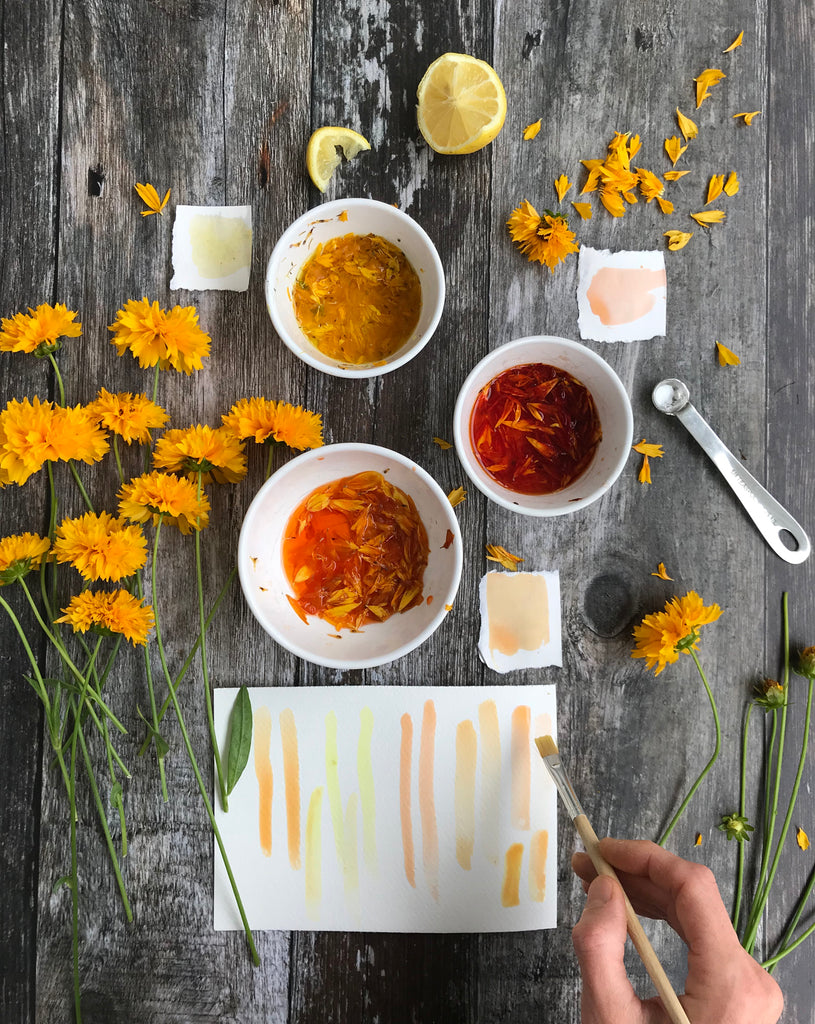
This project is adapted from my book called Grow Your Own Colour which will show you how to grow your own dye plants no matter how little space you have: a garden, balcony or even a window-box. Learn how to grow, harvest and dye with a range of incredible dye flowers as well as Japanese indigo.
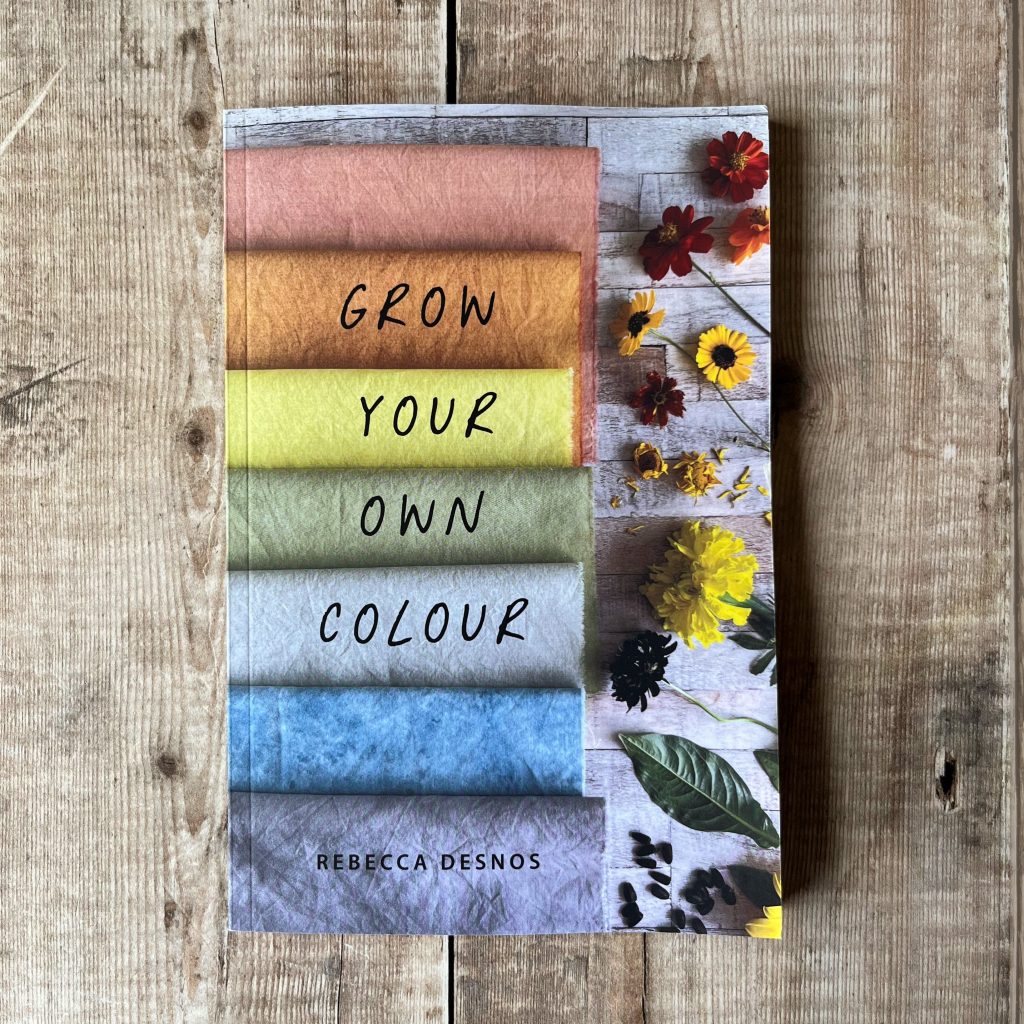
OK, let’s get started and look at coreopsis in more detail!
I’ve been growing coreopsis plant for many years. I grew this particular potted plant on my balcony for a couple of years. It’s a perrenial plant and is just as vibrant in its second summer. It flowers all summer so has plenty of flowers for experiments. This coreopsis is called ‘Early Sunrise’ but there are countless different varieties they all produce dye.
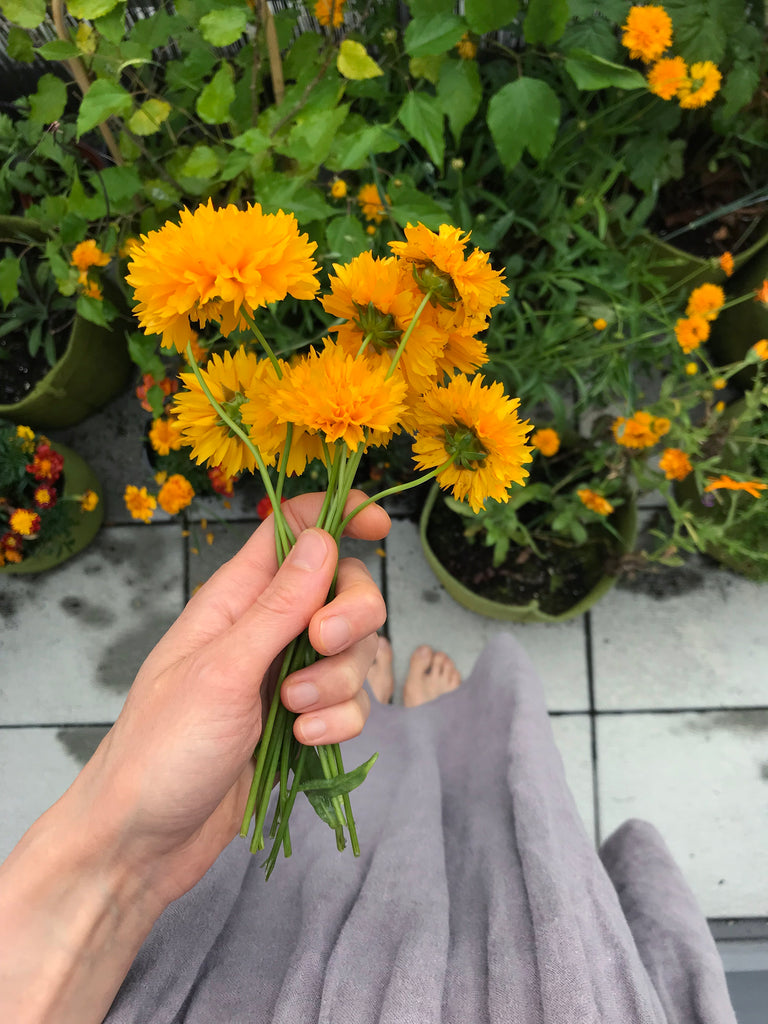
You can try this method with other richly pigmented petals. Some will work better than others, of course, but it’s a quick method so you can see what happens. Dahlia flowers give their colour easily, so that’s another one to try.
Safety
- Make sure the bowls or glass jars you use won’t be used in the kitchen afterwards.
- These flowers are not edible so if you make this paint with children, make sure that they don’t put their fingers in their mouths. My older son has painted with petal paint lots of times, but I haven’t done this with my two year old as he still tests things in his mouth. For younger children, it would be best to make an edible paint such as the juice from defrosting berries.
What you need
- 3 glass jars or small bowls
- coreopsis petals (or other petals you’d like to try)
- a slice of lemon
- bicarbonate of soda (baking soda)
- a paint brush
- a couple of lollipop sticks for stirring
- kettle to boil water
- paper
Let’s get started!
This is the simplest tutorial that I’ve shared on my blog, but the colours are so striking. All you need to do is pour boiling water over petals, stir them to release the colour, then choose if you’d like to alter the pH with an acid or alkali. Then paint! It’s that easy.
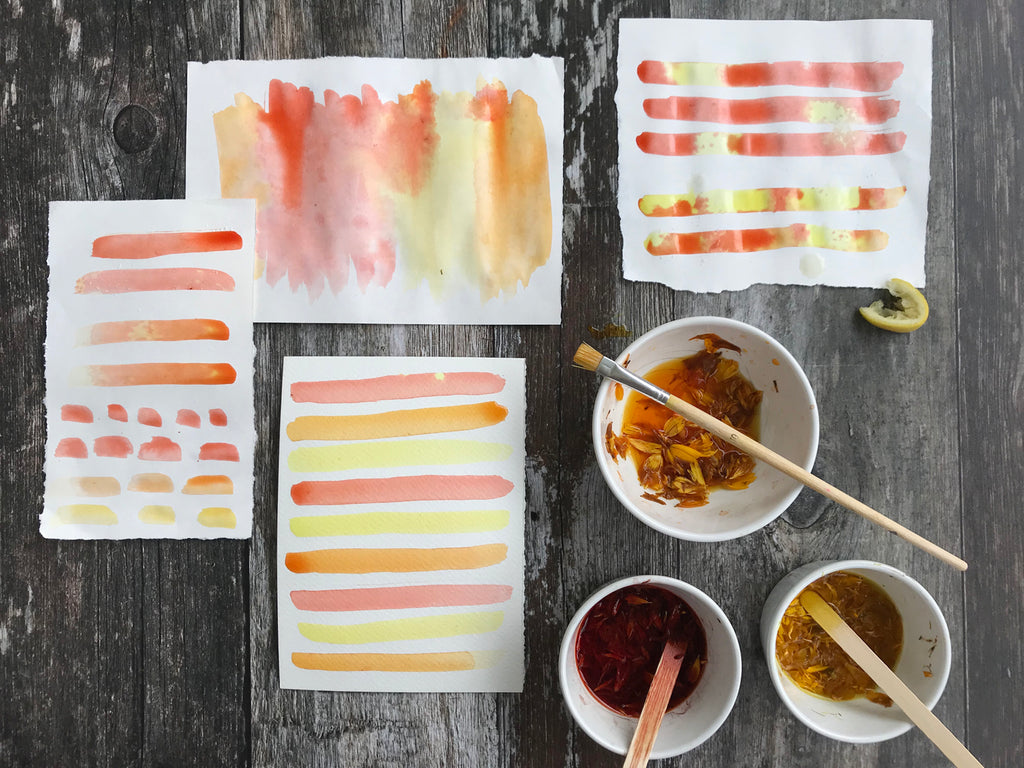
Orange is made from boiling tap water poured over petals (approx. neutral pH), yellow is made from the addition of lemon juice (acid), and red from bicarbonate of soda (alkaline/basic pH).
Here are some more detailed step-by-steps:
- Take the petals off a few flower heads and drop them into a little bowl.
- Pour boiling water over the petals – just enough water so the petals are covered.
- Using your wooden lollipop stick or paintbrush, mix the petals in the water. The dye will change colour right away, but will continue to darken for a while longer.
- Repeat steps 1-3 again to make two more small bowls of dye.
- Add a sprinkle of bicarbonate of soda to one of the bowls. The alkaline (basic) pH will shift the colour to a darker orange/red. I’ve found that this colour will continue to deepen over the next few hours.
- Squeeze some lemon juice into the other pot of dye. The acid will instantly turn the dye yellow, and it may look almost neon. It’s incredible!
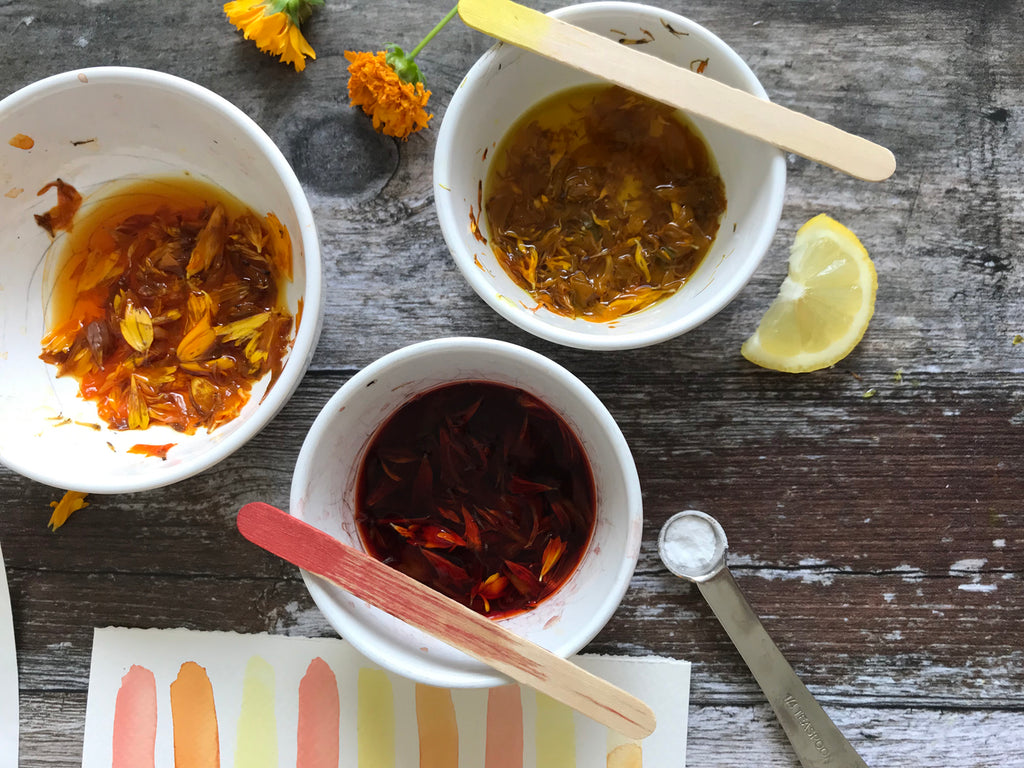
The red paint is made from coreopsis flowers + bicarbonate of soda (baking soda). The yellow is made by adding lemon juice to the dye.
Extra notes:
- Make sure you reserve a stirring stick for each colour, so you don’t contaminate each pot and accidently alter the pH.
- If you use the same paintbrush, then rinse it after dipping in each colour.
- You can sieve out the petals to leave a clear paint, or just dip your paintbrush into the liquid. Any petals that get onto the paper will just brush off once the painting is dry.
- Sprinkle lemon juice and bicarbonate of soda over wet paint and watch the colour change on the paper.
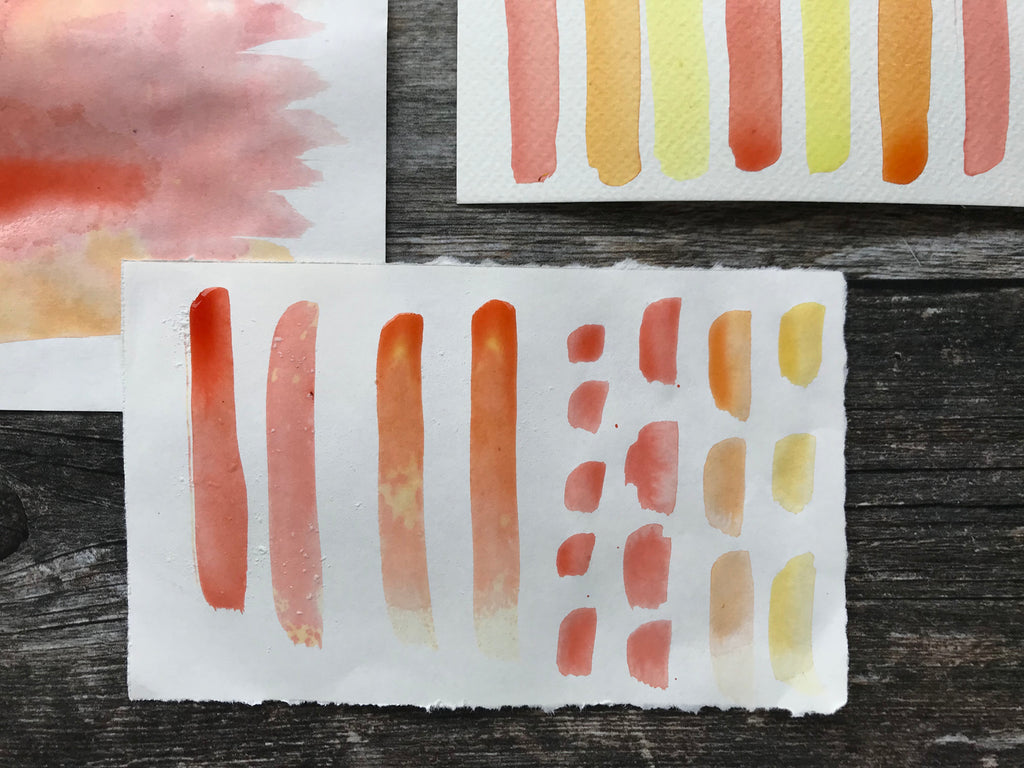
Above: bicarbonate of soda was sprinkled over yellow (acidic) paint to make a subtle mottled orange pattern. Try the same with drips of lemon juice over the red dye to make a spotted pattern.
How long do the colours last?
These colours will eventually fade, so don’t make any special artwork with these paints. My son made a painting last year and it stayed on the wall all summer and it was still colourful, but I can’t guarantee how long the vibrancy will last. You could use these paints inside sketch books or journals that won’t receive sunlight. To test the lightfastness, paint a piece of paper then cover it partially with a piece of thick card. Leave it in the light for a few weeks and then peek under the cardboard to see if has faded.
Painting fabric
You can paint fabric in just the same way as paper. I suggest premordanting your fabric in your usual way, or use soya milk as a pretreatment or use alum as a mordant – both recipes are in Grow Your Own Colour. Then paint with the flower dye. When it’s dry, iron the fabric with a hot iron and ideally wait a few days before rinsing out the excess colour. Since the dye is pH sensitive, it will shift colour with your tap water, so you could make a bucket of slightly acidic or alkaline water to rinse the fabric.
Have fun!
If you’d like to do more flower dyeing, you’ll love my online course Dye With Flowers + Fresh Indigo.
Dye With Flowers + Fresh Indigo
Online course
Make beautiful patterns on cloth with your homegrown flowers and indigo leaves.
Four easy-to-follow videos: one for each of the four dye projects. 70 minutes in total, divided into bite-sized chunks. Life-time access to everything.
You’ll have access to a private Facebook group for extra support for your projects!

